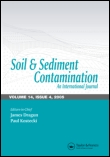
SOIL & SEDIMENT CONTAMINATION
Scope & Guideline
Pioneering research in the fight against environmental contamination.
Introduction
Aims and Scopes
- Contamination Assessment:
The journal extensively covers methodologies for assessing the presence and levels of various contaminants in soil and sediment, including heavy metals, organics, and microplastics. - Ecological Risk Analysis:
Research published in the journal often involves evaluating the ecological risks posed by soil and sediment contaminants, focusing on their effects on flora, fauna, and human health. - Remediation Techniques:
The journal emphasizes the exploration of innovative and sustainable remediation techniques, such as bioremediation, phytoremediation, and the use of biochar and other amendments to restore contaminated environments. - Chemical and Physical Characterization:
Studies frequently involve the chemical speciation and physical characterization of contaminants to understand their behavior in the environment and potential bioavailability. - Impact of Anthropogenic Activities:
The journal highlights the influence of various human activities, such as agriculture, mining, and industrial processes, on soil and sediment quality and the resulting environmental implications.
Trending and Emerging
- Microplastics Contamination:
Recent publications underscore a growing concern about microplastics in soils and sediments, reflecting an increased awareness of their environmental persistence and potential ecological impacts. - Integrated Risk Assessment Approaches:
There is a trend towards holistic risk assessment methodologies that incorporate multiple contaminants and their interactions, emphasizing the need for comprehensive evaluations of environmental health. - Bioremediation and Green Technologies:
Research focusing on bioremediation techniques, including the use of natural organisms and bio-based materials for soil recovery, is gaining momentum as sustainable solutions to contamination. - Impact of Climate Change on Soil Contamination:
Emerging studies are addressing how climate change factors, such as altered precipitation patterns and temperature shifts, affect soil contamination dynamics and pollutant behavior. - Nanotechnology in Soil Remediation:
The incorporation of nanotechnology in remediation strategies is on the rise, showcasing innovative methods for enhancing contaminant removal and improving soil health.
Declining or Waning
- Traditional Chemical Analysis Methods:
There has been a noticeable decline in studies focusing solely on traditional chemical analysis methods for contaminant detection, as more advanced techniques and interdisciplinary approaches gain traction. - Single Contaminant Studies:
Research focusing on the impact of single contaminants without considering their interactions in complex mixtures is becoming less common, as the complexity of environmental systems is increasingly acknowledged. - Geotechnical Properties of Contaminated Soils:
While still relevant, the exploration of geotechnical properties in relation to contamination has waned, possibly due to a shift towards more integrated studies that consider ecological impacts alongside physical properties.
Similar Journals

Soil and Water Research
Connecting Science and Solutions in Soil and Water ManagementSoil and Water Research, an esteemed journal published by the Czech Academy Agricultural Sciences, is dedicated to advancing the fields of Aquatic Science and Soil Science. With a strong commitment to open access since 2006, this journal facilitates the dissemination of high-quality research and fosters global collaboration among researchers, professionals, and students. Operating from the vibrant academic hub of Prague, Czech Republic, it serves as a key resource for those interested in pressing environmental and agricultural challenges. Featuring a robust H-index and ranking in the Q2 category for both Aquatic Science and Soil Science as of 2023, Soil and Water Research occupies a prominent position in Scopus, ensuring that published works reach a wide audience. The journal invites contributions that explore innovative methodologies and provide insights into soil and water management practices, thus playing a critical role in addressing sustainability issues within these interconnected domains. As researchers navigate the complexities of climate change and resource management, Soil and Water Research stands out as a vital tool for informed decision-making and impactful research.
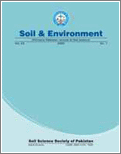
Soil & Environment
Fostering Collaboration for a Greener FutureSoil & Environment is a distinguished open access journal published by the University of Agriculture, Institute of Soil & Environmental Sciences, located in Faisalabad, Pakistan. Established in 2006, this journal has become a vital platform for disseminating pioneering research in the fields of Environmental Science and Soil Science. With an ISSN of 2074-9546, it provides a wealth of knowledge through accessible academic articles, particularly focusing on sustainable practices and innovations that impact soil and environmental health. Although currently categorized in Q4 within both Environmental Science (miscellaneous) and Soil Science, the journal is dedicated to enhancing its influence and visibility as it progresses towards convergence years that span from 2010 to 2024. Researchers, professionals, and students will find Soil & Environment an essential resource for staying informed about the latest developments and methodologies in soil conservation and environmental sustainability. By offering publicly accessible content, the journal aims to foster greater collaboration and knowledge-sharing within the global scientific community.

Spanish Journal of Soil Science
Unlocking the Secrets Beneath Our FeetThe Spanish Journal of Soil Science is a prestigious open-access journal published by FRONTIERS MEDIA SA since 2011. Based in Switzerland, this journal serves as a vital platform for disseminating innovative research and applications within the field of soil science. With its commitment to accessibility, the journal enables researchers, professionals, and students from around the globe to contribute to and benefit from its wealth of knowledge. As of 2023, it holds a respectable Q3 category ranking in soil science and is positioned at #88 out of 159 in the Scopus rankings for Agricultural and Biological Sciences. The journal aspires to foster collaboration and communication among soil scientists, encouraging the exploration of contemporary soil issues, sustainable practices, and advancements in technology. Its open-access model ensures that the latest findings are freely available, promoting a broader impact in environmental and ecological studies.
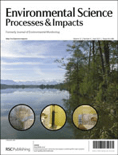
Environmental Science-Processes & Impacts
Empowering voices in environmental science and policy.Environmental Science-Processes & Impacts is a premier journal published by the Royal Society of Chemistry, focusing on critical research in the field of environmental science. With ISSN 2050-7887 and E-ISSN 2050-7895, this journal has established itself as an authoritative source of knowledge since its inception in 2012, maintaining a remarkable Q1 quartile ranking across significant categories such as Environmental Chemistry, Management, Monitoring, Policy and Law, Medicine, and Public Health for the year 2023. It stands as an essential resource for professionals, researchers, and students, aimed at advancing scientific understanding and solutions to pressing environmental issues. With impressive ranks in Scopus, including #45 in Public Health and #27 in Environmental Chemistry, the journal provides a platform for impactful research and interdisciplinary collaboration, emphasizing open access to foster the dissemination of knowledge globally. Join a community committed to exploring the interconnectedness of environmental processes and their implications for society by contributing to or learning from cutting-edge studies published in this esteemed journal.
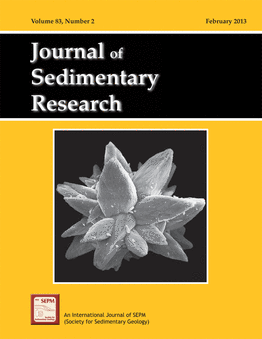
JOURNAL OF SEDIMENTARY RESEARCH
Advancing the Understanding of Sedimentary ProcessesThe JOURNAL OF SEDIMENTARY RESEARCH, published by SEPM-SOCIETY FOR SEDIMENTARY GEOLOGY, stands as a pivotal peer-reviewed journal in the field of sedimentary geology. With an ISSN of 1527-1404 and an E-ISSN of 1938-3681, this esteemed journal features a broad scope, delving into the intricacies of sedimentary processes, lithology, and stratigraphy since its inception in 1931. Enjoying a distinguished reputation, it has achieved a Q1 category ranking in Geology for 2023 and ranks 87 out of 321 in Earth and Planetary Sciences, placing it in the 73rd percentile among its peers in Scopus. With continued access options available, it facilitates the dissemination and discussion of cutting-edge research that shapes the understanding of sedimentary phenomena. Researchers, professionals, and students alike benefit from this critical platform that fosters academic engagement and drives progress within the field.
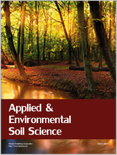
Applied and Environmental Soil Science
Exploring innovative pathways to enhance soil management practices.Applied and Environmental Soil Science, an esteemed journal published by HINDAWI LTD, focuses on disseminating high-quality research in the fields of soil science and environmental applications. With an ISSN of 1687-7667 and an E-ISSN of 1687-7675, this open-access journal has been a vital resource for the academic community since its inception in 2009. As of 2023, it holds a commendable position in the Q2 category for both Earth-Surface Processes and Soil Science, highlighting its impact in these crucial disciplines. The journal’s rankings further affirm its significance within the field, being placed 61st in Earth and Planetary Sciences and 58th in Agricultural and Biological Sciences. Researchers and practitioners alike benefit from the collaborative platform it offers for sharing innovative studies essential for sustainable soil management and environmental integrity. With a focus on advancing knowledge and fostering interdisciplinary dialogue, Applied and Environmental Soil Science stands as a crucial pillar for scholars and professionals dedicated to addressing the pressing challenges of soil and environmental health.

Carpathian Journal of Earth and Environmental Sciences
Connecting Knowledge for a Greener TomorrowCarpathian Journal of Earth and Environmental Sciences is a distinguished academic journal dedicated to advancing the interdisciplinary field of Earth and environmental sciences. Published by the Carpathian Association for Environment and Earth Sciences, this journal plays a pivotal role in disseminating high-quality research focused on the dynamic interactions between geological processes and environmental changes. With an ISSN of 1842-4090 and an E-ISSN of 1844-489X, the journal is indexed in Scopus and holds an esteemed Q3 quartile ranking in both Earth and Planetary Sciences and Environmental Science categories as of 2023. Since its inception in 2008, the Carpathian Journal has provided an open access platform for researchers, professionals, and students to share insights, foster collaboration, and engage in critical discussions on pressing environmental issues. By continuously contributing to the body of knowledge in this field, the journal not only enhances academic discourse but also promotes sustainable environmental practices across Romania and beyond.
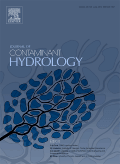
JOURNAL OF CONTAMINANT HYDROLOGY
Elevating the discourse on environmental impacts and water safety.Journal of Contaminant Hydrology, published by Elsevier, is a prestigious interdisciplinary platform dedicated to advancing the field of hydrogeology and environmental science. With an impressive Impact Factor reflecting its credibility and contribution to the field, the journal is ranked in the top tiers of both Environmental Chemistry (Q2) and Water Science and Technology (Q1) categories, highlighting its significance in addressing critical issues related to water quality and pollutant behavior. Since its inception in 1986, the journal has been pivotal in disseminating cutting-edge research, crucial for practitioners, policymakers, and academic professionals seeking to understand contaminant dynamics in hydrological contexts. The Scopus Rankings position it as a leader in the field, with a strong focus on high-quality, original research that influences current and future studies. Although the journal is not open access, its insightful contributions remain accessible through various academic databases, making it an essential resource for those engaged in preserving and navigating water resources effectively.

Toxics
Transforming toxicology insights into public health solutions.Toxics is a leading international journal published by MDPI that has been dedicated to advancing the knowledge in the fields of toxicology, environmental health, and chemical safety since its inception in 2013. With an impressive Open Access model, it ensures that all research findings are readily available to a global audience, fostering collaboration and innovation across academia and industry. The journal is esteemed for its rigorous peer-review process and holds notable rankings, including Q1 status in Chemical Health and Safety and Q2 in both Health, Toxicology and Mutagenesis and Toxicology, reflecting its impact on critical research areas. Based in Basel, Switzerland, Toxics provides a platform for researchers, professionals, and students to disseminate significant findings on the implications of toxic substances in health and the environment, aiming to improve public health outcomes and inform regulatory decisions. With its ongoing commitment to high-quality research and relevant access options, Toxics continues to be an essential resource in the domain of toxicology and environmental sciences.
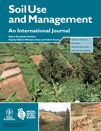
SOIL USE AND MANAGEMENT
Transforming soil science through rigorous research.SOIL USE AND MANAGEMENT is a premier academic journal published by Wiley, focusing on the critical domains of Agronomy, Crop Science, Pollution, and Soil Science. With an ISSN of 0266-0032 and an E-ISSN of 1475-2743, the journal has established itself as a vital resource in the field since its inception in 1985. Operating from its U.S. headquarters in Hoboken, NJ, SOIL USE AND MANAGEMENT boasts impressive Q1 rankings across its relevant categories, indicating its standing in the top tier of research journals. Notably, it is ranked 48th out of 406 journals in Agronomy and Crop Science and holds an 88th percentile position, as well as a commendable rank of 26th out of 159 journals in Soil Science, underscoring its influence and reach. This journal serves as an essential platform for researchers, professionals, and students dedicated to sustainable soil management practices and understanding soil's role in agricultural productivity and environmental health. Although it does not offer Open Access, its rigorous peer-review process ensures the publication of high-quality original research, reviews, and case studies critical for advancing knowledge and practice in the field. This journal is crucial for anyone engaged in soil science and its related disciplines, encouraging innovative approaches to challenges facing soil use and management today.